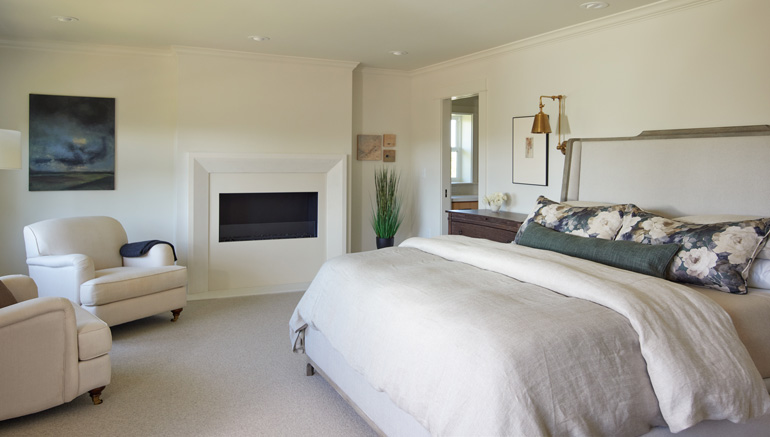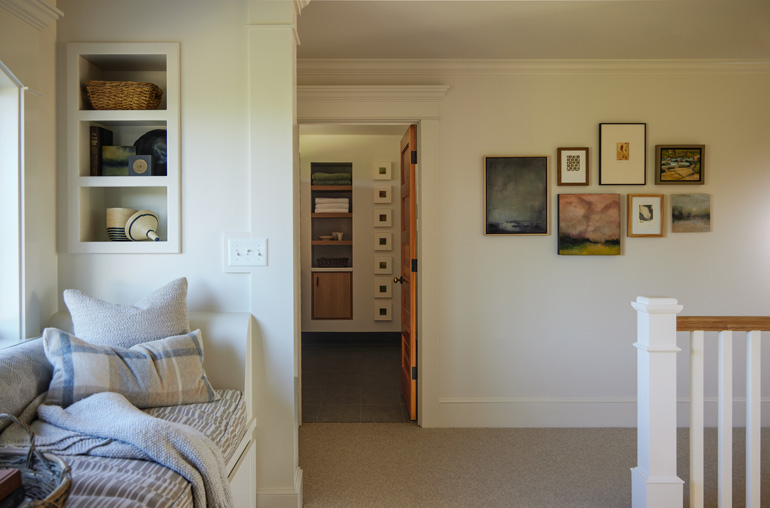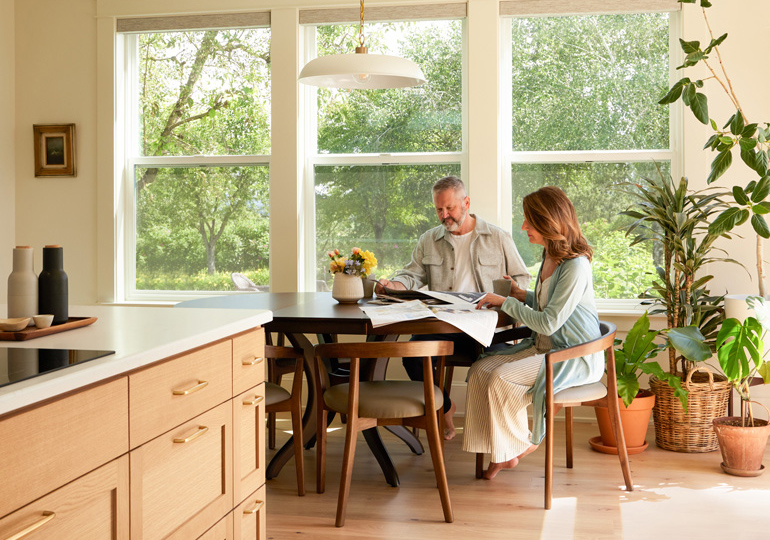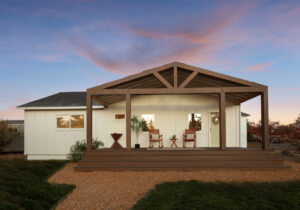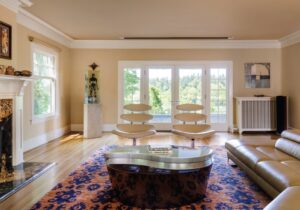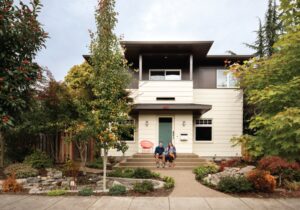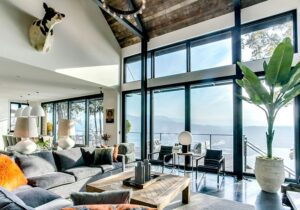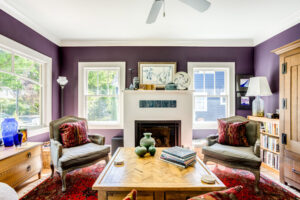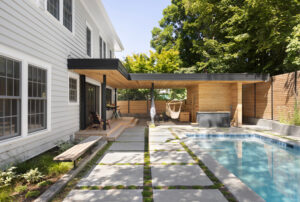A farmhouse remodel designed for laid-back elegance hits the spot for a hops and hazelnut farmer and an artist.
Photography by George Barberis
Redoing a home because it’s just not right for modern living? That’s great. Remodeling a home after you’ve lived there for 25 years and know it — and yourselves — through and through? That’s a testament to an entire life.
“We really respond to the concept that there are no bad ideas,” says homeowner Liz Coleman, an artist who co-owns, with her husband, John, Westwood Farms, a 1,000-acre hazelnut and hops farm in the upper Willamette Valley. “We had a really clear vision of what kind of meaning and purpose we wanted for our home.”
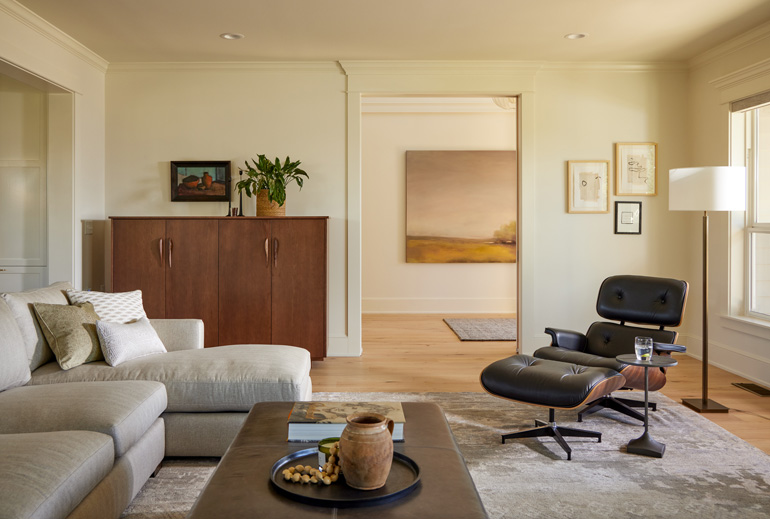

Inspired Life
Values-based design isn’t exactly new — ornate Victorians of the 1800s spoke of the era’s love of craftsmanship, Tudors of the 1920s were designed as shows of wealth, and the mid-mod era put the relationship between indoor and outdoor spaces at the forefront. But new is how broadly homeowners are interpreting what kinds of values can be built into a project.
For the Colemans, that means enjoying what they’ve built through greater views of the land they steward, structural openness befitting their welcoming personalities, material choices that put people at ease, letting go of what’s no longer important (like giant closets), and working in design surprises that allow homeowners and guests to experience pure delight.
“We have a thing about very well-done powder rooms,” Liz says. “It has to have music.”
“It was not an afterthought,” John adds.
The Colemans first built the home in 1999, but their ties to this land in the upper Willamette Valley are strong — John’s family has been farming since they settled in the area in the 1840s. The Colemans raised their three children there. Now empty nesters, the couple wanted to fix some of the home’s issues with draftiness, a lack of light and a formality that no longer suited them. They wanted a home that felt more like them: laid-back, welcoming, family-centered people who know what they believe in.
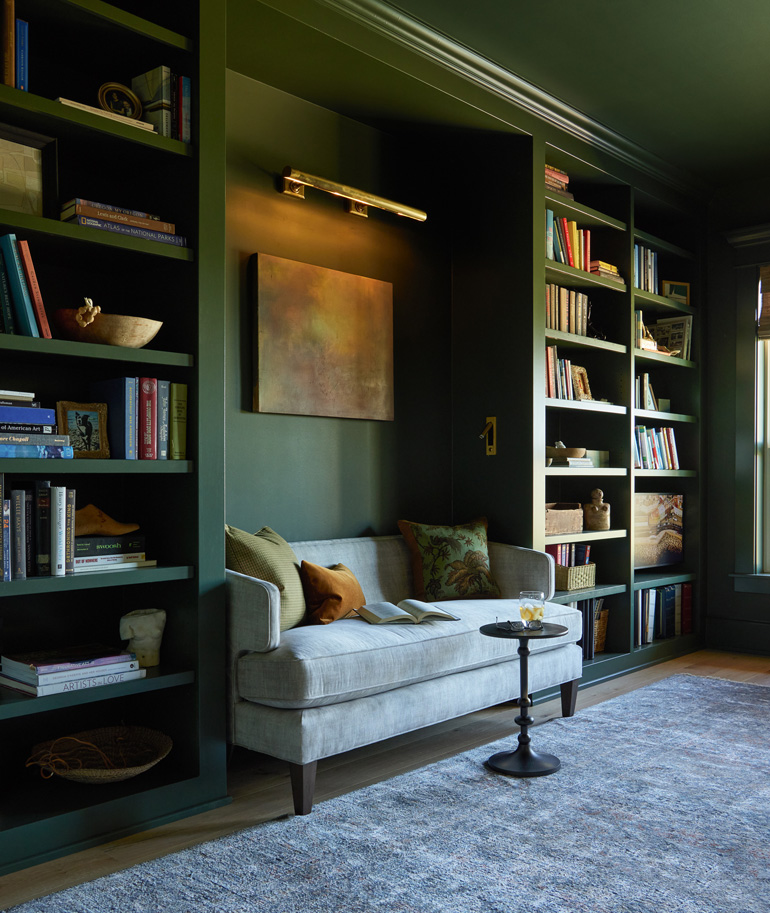
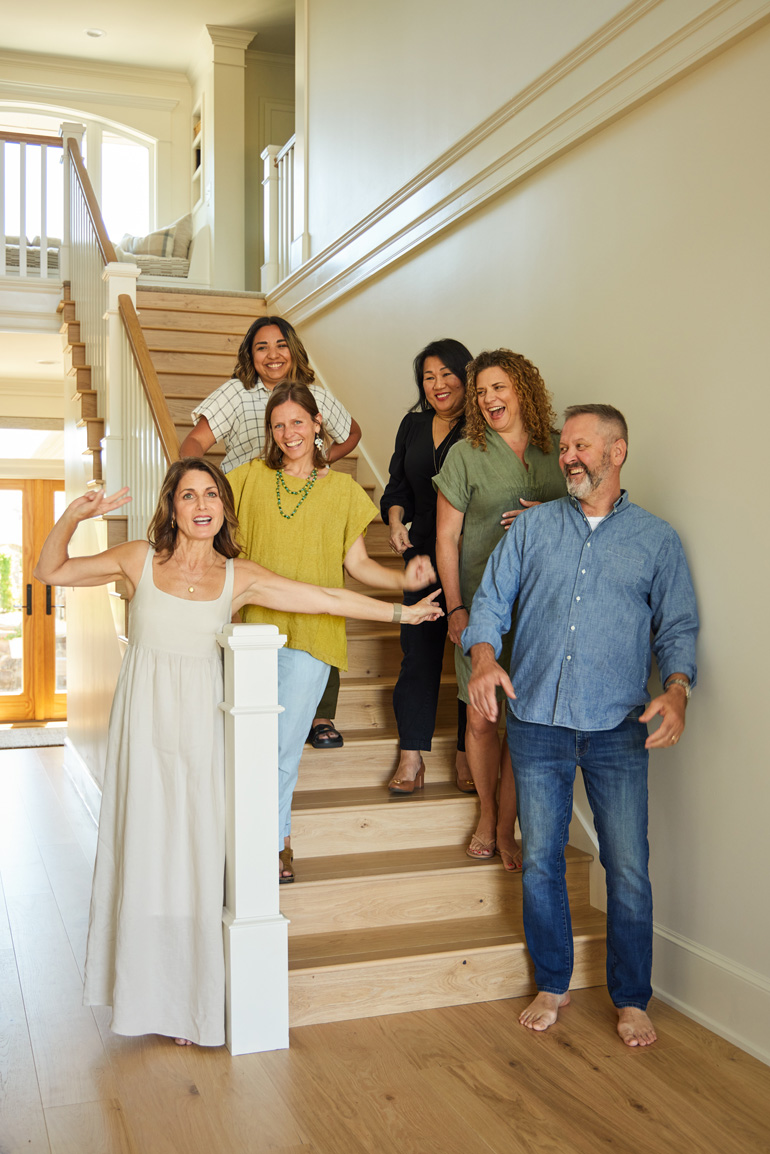
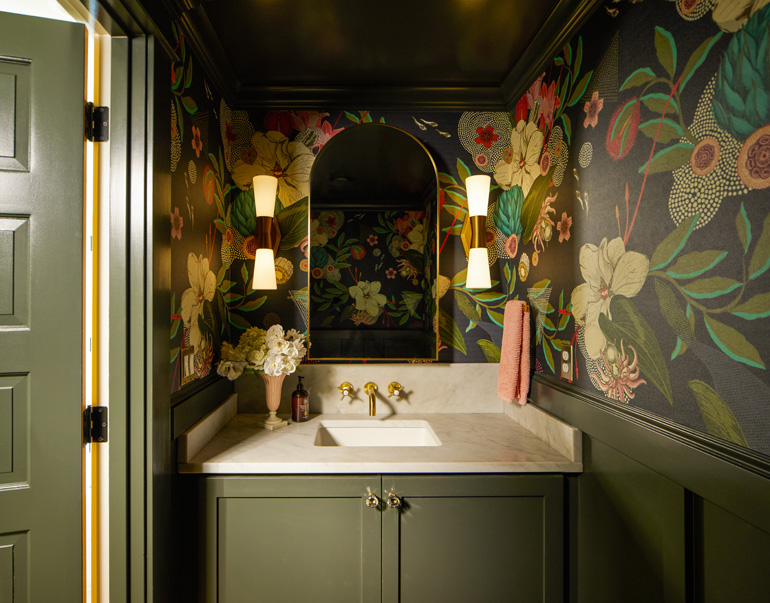
Green Wherever Possible
The Colemans also sought a high-level of environmental upgrades that respect the environment and incorporate green solutions for energy and material use. They found their perfect collaborators with Green Hammer Design Build (who did the architectural design and whole-house programming), builder Cellar Ridge and designer Amy Troute for the interior.
“We were able to pull together a very clear vision deck for who we were and how we wanted the house to function,” Liz says. “There was a lot of mutual-admiration society through it all.”
They wanted guests to relax the minute they stepped in the door. Their laid-back vibe is embodied in the relatively spare entryway highlighted with custom pendants from HiiH Lights and an antique bench from Aurora Mills Architectural Salvage. It continues into the main living space, anchored by a plaster fireplace, which uses biofuel instead of gas, and into the kitchen, with a large island made for many and with hardware and material finishes that feel elevated but not overly fancy. Floor-to-ceiling custom cabinetry makes up for storage that was lost when the designers removed the main wall separating the kitchen from the living room.
Eco-consciousness is a throughline in the home. To build that sustainable home life, the team tightened the home’s envelope (windows, doors and other elements prone to causing inefficiencies) to improve climate control. The living room’s new mantel was carved from a fallen Oregon white oak on the property, with enough left over for each of the couple’s children to have their own mantel. And the marble countertop from the old kitchen island? It was used as a backsplash in the bar and as a counter surface in the powder room.
“We just know more than we knew when we first built this home,” Liz says.
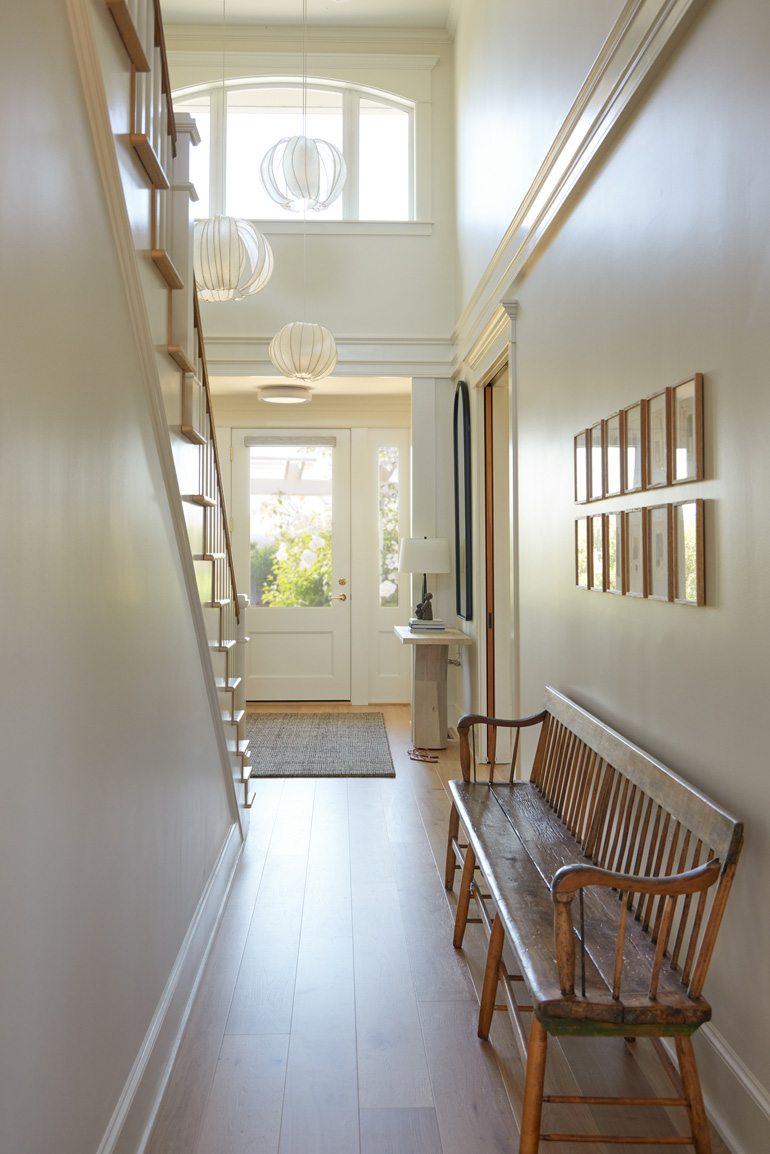
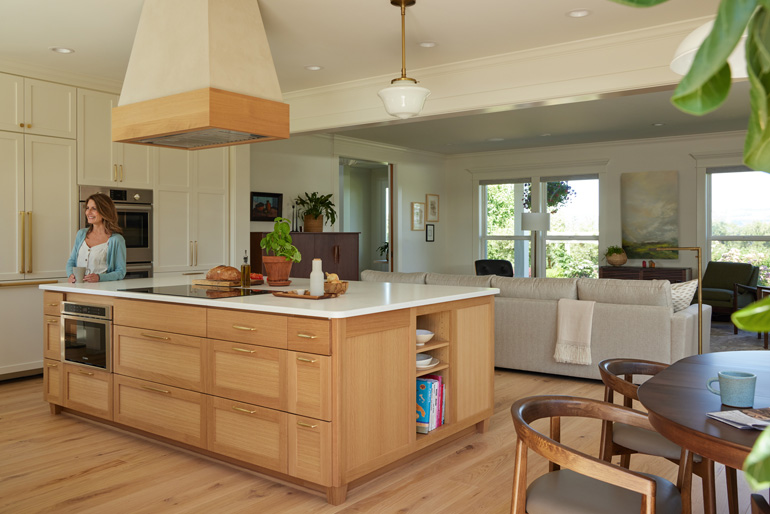

Private Havens
Remodeling the upstairs, the team at Green Hammer reworked the floor plan, removing a large walk-in in favor of an additional guest room and reconfiguring a guest bath to accommodate visiting young couples with kids. Though they have been together for more than three decades, the Colemans had never focused on their primary bedroom before. They freshened everything up, working with touchable texture and light-catching textiles. They added wall storage to replace a walk-in wardrobe and remodeled the accompanying bathroom with material finishes that work with the rest of the house.
“We wanted to make this home a place where people can come and stay and still have some privacy and quiet,” Liz says. “Sure, things were wearing down, but the entire project was more about how it might work for our family now rather than when our children were small.”
All three of the couple’s children returned to the home during the pandemic, before continuing on in the past couple of years. But every one of them came to their parents individually to ask how they might be included in the farm’s future life.
“It’s pretty rare these days that the younger generation wants to continue with farming,” John says.
Out back the farm is also changing. The bulk of what the family produces is hops and hazelnuts, but there is some open ground where they dream about what’s next.
“We’re looking to plant some permanent crops — like caneberries, or something we can farm sustainably alongside what we do,” John says. “Now we look through every window and have a picture.”
